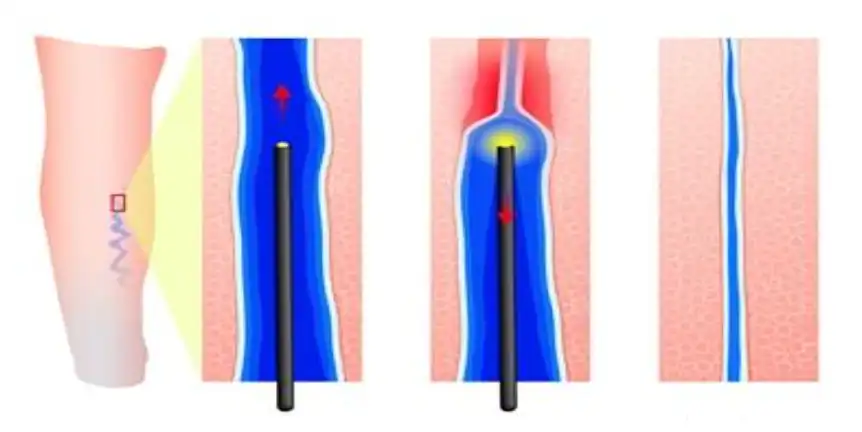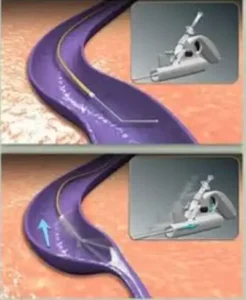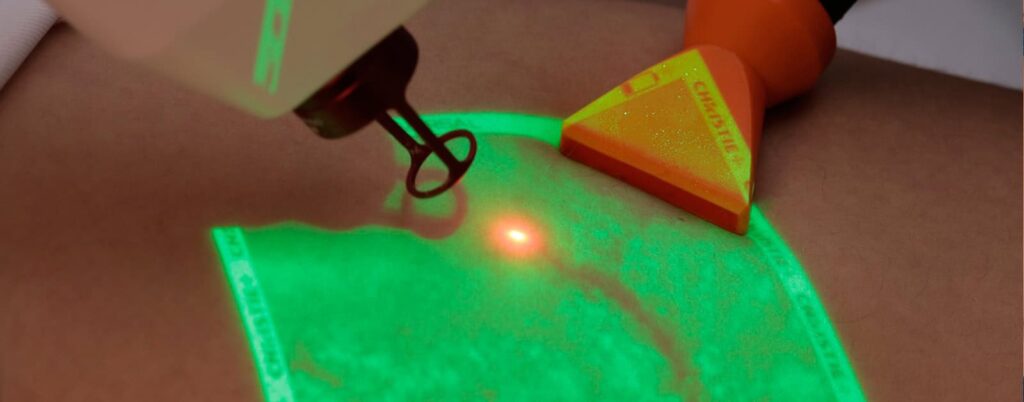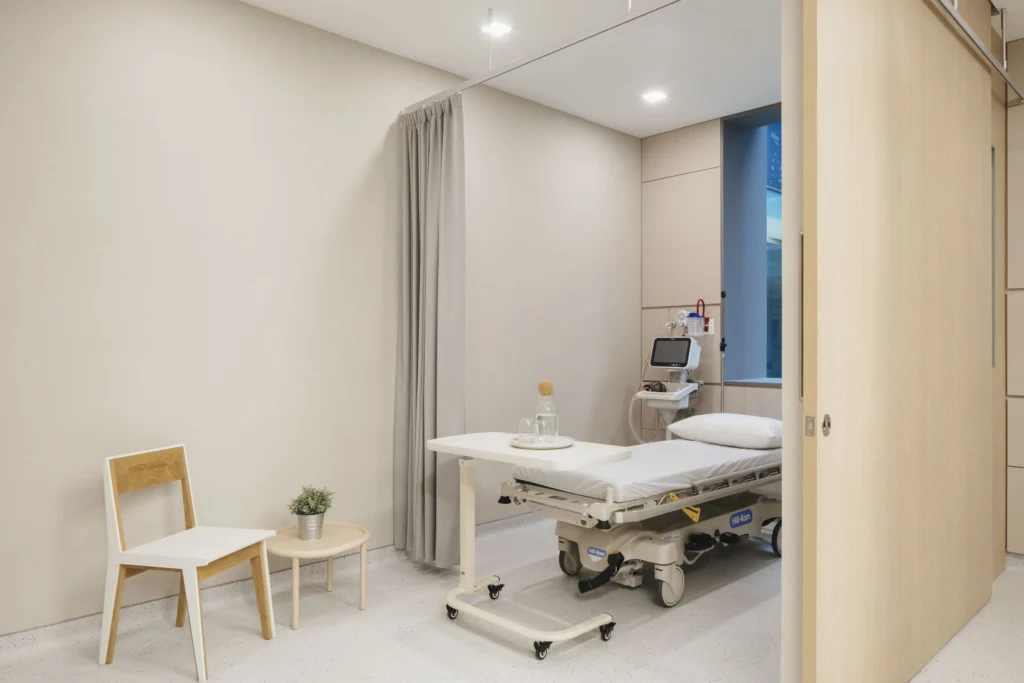Varicose Vein Surgery in Singapore: Costs, Recovery & Risks
Varicose Veins Treatment
Suffering from varicose veins?
If you’ve tried compression stockings or made lifestyle changes without much relief, varicose vein surgery may seem like the next step. But is it suitable for your case?
At the Vascular and Interventional Clinic, our experienced specialists understand that choosing varicose vein surgery is a big decision. Rather than rushing into self-diagnosis or assumptions about what you need, consulting with our varicose vein specialists allows advice tailored specifically to your situation.
In this article, we’ll explain what you need to know about varicose vein surgery: from the types available in Singapore, to costs, recovery time, and alternatives.
WHAT is it
What Is Varicose Vein Surgery?
Understanding the various surgical approaches available helps you make decisions about your vein health.
Varicose vein surgery comprises several medical procedures aimed at correcting an underlying venous insufficiency that causes blood to pool in your leg veins. When the tiny valves inside your veins stop working properly, blood flows backwards and accumulates, creating the bulging appearance and associated symptoms like aching, heaviness, and swelling.
The primary goal of any varicose vein surgery is to redirect blood flow through healthy veins, eliminating the problematic ones that cause symptoms and aesthetic concerns. This process actually improves your circulation by addressing malfunctioning veins.
Who Needs Varicose Vein Surgery?
Not everyone with varicose veins needs surgery. Surgery becomes necessary when conservative treatments have failed and symptoms persist.
It is typically recommended if you experience:
- Persistent pain or heaviness in the legs
- Skin discolouration or ulcers
- Bleeding from varicose veins
- Ineffective results from conservative treatment
A consultation with a vascular specialist can determine whether surgery is suitable based on the severity of your condition and your overall health.
Types of Varicose Vein Surgery Available in Singapore
Minimally Invasive Varicose Vein Surgery Options
There are several minimally invasive and open surgery options available to address varicose veins.
These minimally invasive surgeries typically require little to no downtime and can be performed in a clinic setting.
VenaSeal™ / VenaBlock Glue
VenaSeal™ / VenaBlock Glue closure system represents the latest advancement in varicose veins treatment, using medical-grade adhesive to permanently seal problematic veins.

Radiofrequency Ablation
Radiofrequency ablation offers similar benefits to laser treatment but uses radiofrequency energy instead of laser heat. Both techniques achieve excellent long-term results with minimal discomfort and quick recovery times.
Endovenous Laser Abalation (EVLA)
Endovenous laser ablation (EVLA) uses laser energy to seal problematic veins from the inside. A thin laser fibre is inserted through a small puncture, and controlled heat closes the vein permanently. Blood automatically reroutes through healthy veins, eliminating symptoms whilst improving circulation.

Clarivein™ Mechanochemical Ablation
Clarivein™ Mechanochemical Ablation: ClariVein™ combines two approaches – mechanical destruction via a thin pin-sized catheter (tube) of the vein and the injection of sclerosant to the targeted treatment area.

Sclerotherapy
Sclerotherapy involves injecting a special solution directly into affected veins, causing them to collapse and eventually disappear. This technique works particularly well for spider veins and smaller varicose veins. Foam sclerotherapy uses a foam version of the solution for larger veins, increasing contact time and effectiveness.
Cryo-Laser and Cryo-Sclerotherapy (CLaCs)
Cryo-Laser and Cryo-Sclerotherapy (CLaCs): This procedure causes a selective photo-thermolysis of the varicose vein wall via combining transdermal laser effect and injection sclerotherapy using a chemical sclerosant, all under skin cooling (-20°C). It is the most suitable method to treat small superficial skin spider thread veins.

Micro Phlebectomy (MSA)
Micro phlebectomy (MSA) is a surgical technique where small varicose veins are removed through tiny punctures in the skin. This procedure is often combined with other treatments to address both surface veins and underlying causes comprehensively.
Varicose Veins Open Surgery Treatment Options
Whilst minimally invasive procedures handle most varicose veins cases effectively, some situations such as larger or more complex veins still require open surgeries.
These are the more conventional and invasive methods where the affected vein is physically tied off and removed through incisions.
Traditional Vein Stripping
Traditional vein stripping involves removing the entire problematic vein through small incisions, though this approach is less common today due to advances in minimally invasive techniques.

High Ligation
High ligation involves surgically disconnecting the problematic vein from the deep venous system, preventing blood from flowing into the varicose vein. This procedure is sometimes combined with other techniques for optimal results.
WORTH IT
Is Varicose Vein Surgery Worth It?
Weighing the benefits against potential risks helps determine whether surgery aligns with your personal health goals and expectations. Most patients find large improvement in both symptoms and quality of life following appropriate surgical treatment.
Consider the long-term perspective: untreated varicose veins typically worsen over time, potentially leading to more serious complications requiring more extensive treatment. Early intervention often prevents progression to chronic venous insufficiency, skin damage, or venous ulcers.
However, surgery isn’t always appropriate. Patients with certain medical conditions, misaligned expectations, or those whose symptoms don’t impact their lives might benefit more from non-surgical approaches. This emphasises the importance of thorough consultation with experienced specialists who can provide honest, personalised recommendations.
Benefits of Varicose Vein Surgery
The advantages of a successful varicose vein surgery extend beyond aesthetic improvement, and include functional and psychological benefits.
- Symptom relief represents the primary benefit, with most patients experiencing dramatic reduction in leg pain, heaviness, cramping, and swelling within weeks of treatment. Many describe feeling like they have “new legs” after years of discomfort.
- Improved circulation results from redirecting blood flow through healthy veins, enhancing overall leg function and reducing the risk of complications like blood clots or skin changes.
- Enhanced quality of life often surprises patients, as they can return to activities they’d avoided due to leg discomfort. Exercise tolerance improves, and many find they can stand or walk for longer periods without symptoms.
- Aesthetic improvement boosts self-confidence, allowing patients to wear shorts, skirts, or swimwear without feeling self-conscious about their leg appearance.
Risks and Side Effects of Varicose Vein Surgery
Like all medical procedures, varicose vein surgery comes with risks and potential side effects:
- Common minor side effects include temporary bruising, mild discomfort, and numbness along the treated vein path.
- Rare but serious complications can include deep vein thrombosis (blood clots), nerve injury, or infection.
- Temporary skin discoloration sometimes appears along the treated vein tract but usually fades over time. Some patients may experience temporary firmness or cord-like sensation where the vein was treated.
- Allergic reactions to local anaesthesia are very rare but possible. Your medical team will review your allergy history and take appropriate precautions during your procedure.
COSTS
Varicose Vein Surgery Cost in Singapore
Financial planning for varicose vein surgery requires understanding the various factors that influence pricing and potential insurance coverage options available to Singapore residents.
Varicose vein surgery costs in Singapore vary based on several factors: the complexity of your condition, chosen surgical technique, surgeon’s experience, facility used, and whether complications arise requiring additional treatment.
Average Price Range of Surgery
Private healthcare costs typically range higher than public hospital treatments, but often provide shorter waiting times and more personalised service. Many patients find the investment worthwhile considering the long-term benefits and improved quality of life.
To give a sense of cost, MOH has benchmarks on the surgeon’s fee for various varicose veins surgery, which exclude GST and other fees (e.g. facility fee, equipment fee, consultation fee, imaging fee).
SURGEON’S FEE RANGE (SINGLE LEG)
-
Ablation & VenaSeal S$4,900 - S$7,300
- Endovenous Laser Ablation (EVLA)
- Radiofrequency Ablation
- VenaSeal
Code: SD713V -
Ligation & Vein Stripping S$2,600 - S$4,300
- High Ligation
- Traditional Vein Stripping
Code: SD805V / SD806V -
Micro Phlebectomy Surgery S$2,600 - S$4,300
- Micro Surgical Avulsion (MSA)
Code: SD808V -
Sclerotherapy S$1,900 - S$4,300
Code: SD717V
Transparent pricing discussions during your consultation ensure you understand all costs upfront, allowing you to make decisions about your treatment timing and provider selection.
Public Hospital vs. Private Clinic Costs for Varicose Vein Surgery
Public healthcare institutions in Singapore offer varicose vein surgery at subsidised rates for eligible patients. However, waiting times for non-urgent cases can be substantial, and treatment options might be more limited compared to private clinics.
Private clinics typically offer shorter waiting times, more treatment options, and greater scheduling flexibility. The cost difference reflects these additional services and the convenience of faster access to care.
Subsidised rates at public institutions can make treatment more accessible for those with financial constraints, though you’ll need a referral from a general practitioner and may wait several months for specialist consultation.
Consider both immediate costs and long-term value when comparing public and private options. Sometimes paying more initially for comprehensive private treatment provides better overall value through superior outcomes and faster resolution of symptoms.
DID YOU KNOW?
The Vascular and Interventional Centre is the only private vascular centre in Singapore with its own in-house operating theatre.
This allows us to offer you greater convenience, reduced facility and equipment-related fees, and minimised waiting times for your procedure.
Does Insurance or Medisave Cover It?
Insurance coverage for varicose vein surgery depends on whether your condition is deemed medically necessary or purely cosmetic. Most insurance policies, including MediShield, cover treatment when varicose veins cause significant symptoms or complications.
Medisave for varicose vein surgery is available for qualifying procedures, though coverage amounts and eligibility criteria vary. Pre-approval is often required, and your doctor must document medical necessity rather than cosmetic concerns.
Purely cosmetic treatments for asymptomatic varicose veins typically aren’t covered by insurance or Medisave. However, if you experience symptoms like pain, swelling, or skin changes, coverage becomes more likely.
Check with your insurance provider and the treating clinic about coverage before starting treatment. Many clinics assist with insurance claims and pre-approval processes to help you understand your financial obligations upfront.
RECOVERY
Varicose Vein Surgery Recovery Process and Tips
Proper recovery planning influences your surgical outcome and return to normal activities. Understanding what to expect helps you prepare appropriately and identify any concerning symptoms requiring medical attention.
Recovery from varicose vein surgery is generally straightforward, with most patients returning to desk jobs within 2-3 days and resuming normal activities within 1-2 weeks. However, individual healing varies based on factors like age, overall health, procedure type, and adherence to post-operative instructions.
Proper wound care, compression therapy, and following your surgeon’s specific instructions dramatically improve outcomes and reduce the risk of complications.

Typical Healing Timeline
Most patients experience:
- First 24-48 hours: Mild discomfort, possible bruising, and some swelling.
- Week 1: Discomfort should gradually decrease. Most patients can return to office work and light activities. Bruising may become more apparent before beginning to fade.
- Weeks 2-4: Noticeable improvement in symptoms. Exercise can gradually resume, starting with walking and progressing based on comfort levels and surgeon’s guidance.
- 1-3 months: Final cosmetic results become visible as swelling completely resolves and any residual bruising fades. Full activity levels can typically resume.
- 6-12 months: Long-term results stabilise, with maximum cosmetic improvement achieved and symptom relief maintained.

What to Expect During Recovery
Realistic expectations about the recovery process help you prepare mentally and physically for it.
- Immediate post-procedure: You’ll likely feel some tightness or mild discomfort along the treated vein path. This is normal and indicates the procedure is working as intended.
- Activity modifications: Avoid heavy lifting, prolonged standing, hot baths, saunas, and strenuous exercise for the first 1-2 weeks.
- Compression therapy: Wearing prescribed compression stockings or bandages as directed is crucial for optimal healing and preventing complications like blood clots.
- Follow-up appointments: Regular check-ups allow your surgeon to monitor healing progress and address any concerns promptly.
Tips for Faster Healing
Simple strategies can help enhance your recovery experience and potentially speed up the healing process.
- Stay active appropriately: Regular walking promotes circulation and prevents blood clots, but avoid overdoing activities that cause discomfort or swelling.
- Elevate your legs: When resting, prop your legs above heart level to reduce swelling and promote venous return.
- Maintain compression: Wear prescribed compression garments as directed, even if they feel uncomfortable initially.
- Stay hydrated and eat well: Proper nutrition and hydration support tissue healing and overall recovery.
- Avoid smoking and excessive alcohol: These substances impair healing and increase complication risks.
alternatives
Alternatives to Varicose Vein Surgery
Surgery isn’t the only option for managing varicose veins.
Conservative management and minimally invasive treatments can effectively manage symptoms and slow progression in many patients, particularly those with mild to moderate varicose veins or medical conditions that make surgery inadvisable. The key is matching the treatment option to your symptom severity and lifestyle impact. Mild symptoms often respond well to conservative measures, whilst more severe cases typically require interventional approaches for meaningful improvement.
Your vascular specialist can help determine which combination of treatments offers the balance of effectiveness, convenience, and cost for your circumstances.
Non-Surgical Options
Several minimally invasive treatments offer middle-ground solutions between conservative management and traditional surgery.
- Compression stockings remain the first-line treatment for mild cases. Properly fitted medical-grade compression stockings can reduce symptoms and slow varicose vein progression.
- External laser therapy can improve the appearance of spider veins and small varicose veins but typically requires multiple sessions and works best on superficial vessels.
Lifestyle Changes That Help
Simple modifications to daily habits can improve varicose vein symptoms and potentially slow disease progression.
- Regular exercise, particularly activities that work your calf muscles like walking, cycling, or swimming, improves venous return and reduces symptom severity.
- Weight management reduces pressure on leg veins and decreases symptom severity.
- Avoiding prolonged standing or sitting helps prevent blood pooling.
- Leg elevation during rest periods and sleep can reduce swelling and improve comfort.
FAQs About Varicose Vein Surgery
Can you walk after surgery?
Yes, walking is strongly encouraged immediately after the varicose vein surgery. Gentle walking beginning within hours of your procedure is crucial for preventing blood clots and promoting healing.
Most patients can walk normally within 24 hours, though you may experience some discomfort initially. Your surgeon will provide specific guidelines about activity levels, but short walks every hour whilst awake during the first few days is typically recommended.
Avoid strenuous hiking or power walking initially, but normal daily walking activities are generally fine and beneficial for your recovery.
How painful is varicose vein surgery?
Most patients report minimal pain, often described as discomfort or tightness after the surgery. Most procedures are performed under local anaesthesia with minimal pain during the procedure itself
Do varicose veins come back after surgery?
Treated varicose veins do not return after successful surgery, as they are permanently closed or removed. However, new varicose veins can develop in other locations over time, particularly if underlying risk factors persist.
Regular follow-up with your vascular specialist and maintaining healthy lifestyle habits can help identify and address new varicose veins early, often with simpler treatments than the original procedure required to positively impact your quality of life.
CONTENTS
YOUR Preferred Health Partner
Why Choose the Vascular & Interventional Centre
We Own Our Own Hybrid Operating Theatre
Unlike many other clinics, the Vascular & Interventional Centre owns and operates our own fully equipped day surgery theatre (angiosuite). This gives you a significant advantage:
- Lower facility and equipment fees – as we do not rely on third-party hospitals.
- Faster scheduling – skip the hospital queues, your procedure can be done promptly and at your convenience.
- Seamless care – from consultation to surgery and follow-up, all under one roof.
This integrated setup allows us to offer greater cost transparency, shorter waiting times, and a smoother overall experience for patients seeking varicose veins treatment.
Highly Experienced Team with Transparent Pricing
Our team brings years of specialised experience in varicose veins treatment, having successfully treated thousands of patients with various venous conditions.
We believe in transparent pricing without hidden costs or unexpected charges. Before beginning treatment, you’ll receive a detailed cost breakdown including all anticipated expenses, helping you plan accordingly and avoid financial surprises during your treatment journey.
Our commitment to transparency extends to treatment expectations, potential risks, and realistic timelines for results. We want you to feel confident and well-informed.
